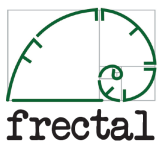Process Improvement- and the role of Information Technology
We have already noted that many healthcare systems are under pressure to change, indeed the recent global economic changes is forcing change across industries.
With less money available all around and the complexity of the challenges mounting, how are systems to cope?
As we have suggested the solutions will be an effective blend of people, process and technology.
Of the elements needed for change, it is worth singling out process improvement for further exploration. While the business process reengineering movement of the 1980s was evidently not a large success story, there is no doubt that we remain under pressure to work smarter, not harder.
Of the process improvement methodologies that have successfully grown in recent years, Lean Thinking, Six Sigma, Total Quality Management, PDCA, let us look at Lean Thinking as an key player in this important field.
Originating from manufacturing origins, its fit within the Cynefin framework and complex systems thinking is worth considering..
Certainly in my reading on Lean thinking, few is any texts begin with an exploration of the complexity of the world, the nature of complex systems and how process improvement methodologies fit within those systems.
Rather Lean (in common with most other current process improvement methodologies) appears to take a more complicated view of systems, which certainly fit with the traditional engineering origins of Lean.
It is important to point out the huge success and impact of Lean thinking around the world, across industries, which points out its major value. There are many examples of Lean success stories to be found, my own personal experience is from the major changes in Emergency Medicine in the NHS which leveraged Lean thinking is the story I am most familiar with and try to share..
So while it is evident that Lean thinking has clearly “added value” within complex systems, I believe there is room for an even greater fit with complex information intensive industries such as healthcare.
Within complex systems, process improvement methodologies should take an iterative approach (rather than waterfall approach) to system redesign.
The first iteration should begin with an analysis of the core (and generic) processes within the system.
Within the Lean methodologies, this involves an exploration of value streams that relate to key processes within the organisation. Most of this value stream mapping is done at a physical layer which makes obvious sense if dealing with physical objects, in a manufacturing environment or other.
However if improving information intensive processes (which are predominant in a field like healthcare) to add real value we need to explore the underpinning logical processes in systems.. i.e. to look for the generic within.
So while the traditional approach to process redesign moves between;
Physical As Is
Physical To Be
This then transforms the process analysis from into a 2 layered (physical-logical) approach..
Physical As Is
Logical As Is
Logical To Be
Physical To Be
From an information systems point of view this 2 layered approach should be key to influencing the design of core elements (in software engineering terms those object- oriented classes needed at a logical layer) required to support the diversity that exist at the physical level.
This additional step may appear an added burden, but in my view unless and until you do this level of analysis you cannot tackle many of the key challenges of aligning process improvement efforts with an effective information systems architecture in complex information intensive fields.
My sense is that Lean thinking as a valuable and successful process improvement methodology appears agnostic about process analysis at this level for several reasons.
Historically Lean has emerged from a manufacturing background. While it is now thriving in the service industry field, Lean appears to remain agnostic about information systems analysis.
There may be some logic in doing so, as the number of Lean thinking success stories without IT demonstrate the value that can be added by changes with people and process alone. Equally there are a significant number of large IT projects that have neither improved processes or added value, which may warn Lean practitioners off delving into information science too deeply.
For now, the term “Lean IT” appears to refer to how to improve your IT service within your organisation… rather than…how to transform and add value from the core of your organisation by aligning both process improvement efforts and effective information systems.
Clearly there is room for change for the greater alignment of process improvement efforts and related information systems to add value for all.
For now we move on, to look at this potential from an information systems perspective..
- Information Technology-should support Process-Improvement
- Uniting Process Improvement and IT- a-move-towards-smart-economies?
- Standards and Value …….and a note about “the last mile”
References:
http://en.wikipedia.org/wiki/Process_improvement
http://en.wikipedia.org/wiki/Lean_manufacturing
http://www.lean.org/whatslean/
Jones D (2008) “Rethinking IT” http://www.leanuk.org/downloads/dan/dan_eletter_200805.pdf





Leave a comment